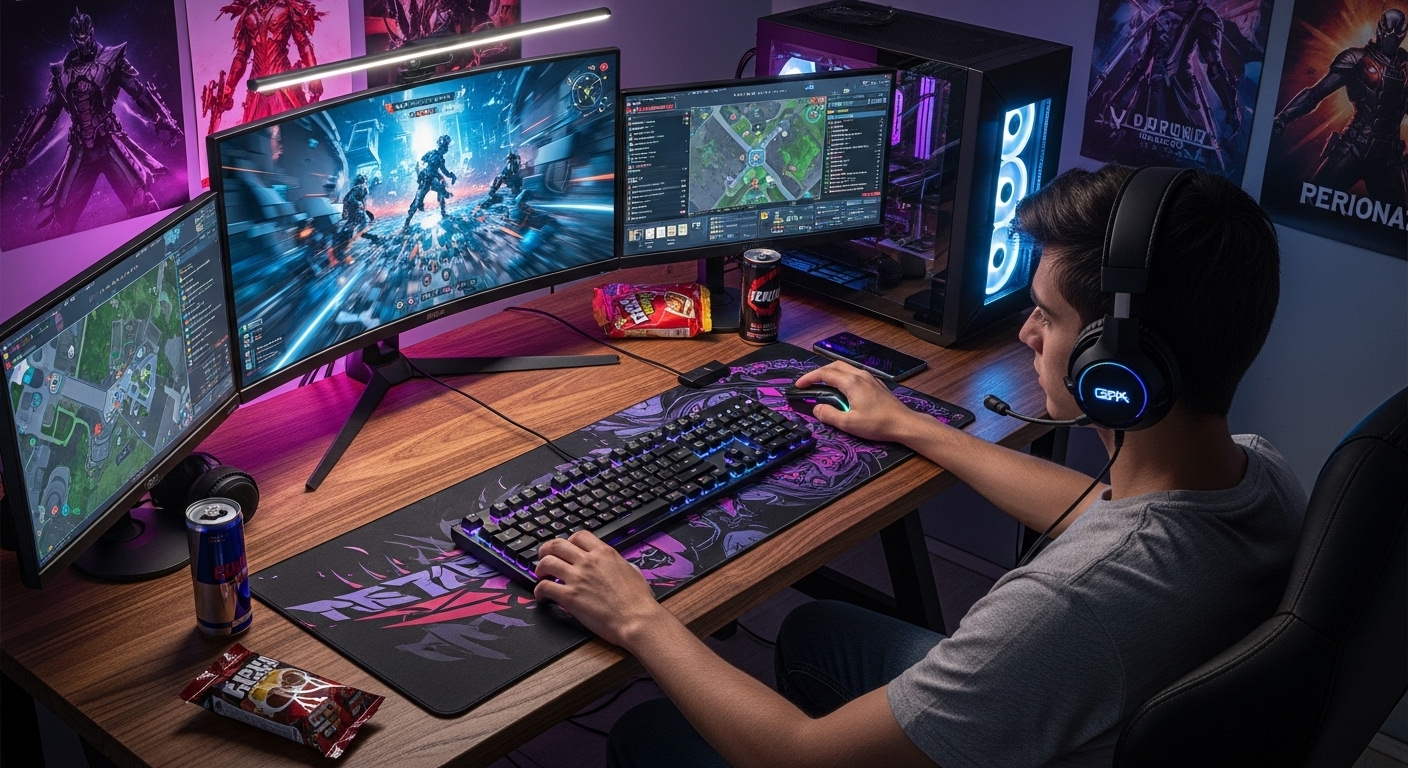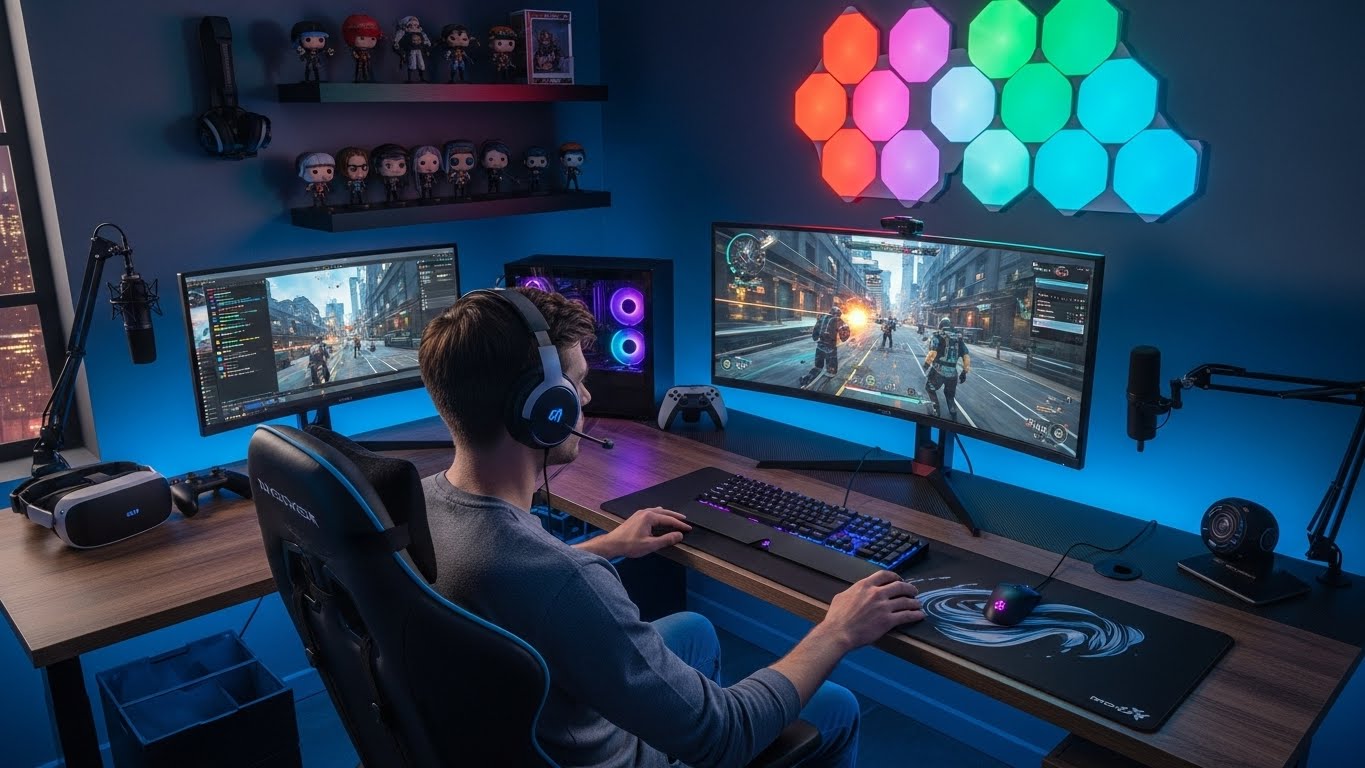Gaming has become one of the most influential forms of entertainment across the globe. It’s no longer just about picking up a controller and pressing a few buttons. Over the years, the gaming industry has undergone a massive transformation. From 8-bit graphics to photorealistic visuals, from single-player campaigns to expansive online universes, gaming has evolved to offer a far richer, deeper experience than ever before. In this blog post, we’ll explore the most exciting trends and innovations in gaming today, and how these advancements are shaping the future of this dynamic industry.
The Rise of Immersive Storytelling in Games
One of the most significant shifts in modern gaming is the emphasis on storytelling. While games like Super Mario and Pac-Man once relied on simple mechanics, today’s most popular titles are built around intricate, emotionally engaging narratives. Games like The Last of Us and Red Dead Redemption 2 have pushed the boundaries of how stories are told in interactive media, blending film-like storytelling with player choice to create deeply immersive experiences.
What makes these games stand out is the emotional connection players develop with the characters and story. The ability to make decisions that impact the narrative, combined with stunning visual designs and voice acting, makes these games feel like an interactive movie rather than just a pastime. This shift towards cinematic experiences has allowed the gaming industry to gain recognition as a legitimate storytelling medium, on par with films and literature.
Virtual Reality and Augmented Reality: Entering New Dimensions
The rise of virtual reality (VR) and augmented reality (AR) is one of the most exciting developments in gaming. VR immerses players in fully interactive 3D environments using headsets, controllers, and motion sensors. Popular VR platforms like the Oculus Rift and PlayStation VR have already made waves, offering players a new way to experience gaming. Games like Beat Saber and Half-Life: Alyx take advantage of the medium to immerse players in fully interactive worlds, where they can physically move, dodge, and manipulate objects within the game.
AR, on the other hand, enhances the real world by adding digital elements to our surroundings. The biggest example of AR in gaming so far has been Pokémon GO, which made players venture into the real world to catch virtual Pokémon. As the technology continues to evolve, AR is expected to become even more integrated into gaming, allowing for even more immersive and interactive experiences that blend the physical and virtual worlds seamlessly.
Cloud Gaming: The Future of Accessibility
Gone are the days when gamers had to invest in expensive consoles or gaming PCs to access the latest titles. Cloud gaming is revolutionizing the way we play games. With platforms like Xbox Cloud Gaming, Google Stadia, and NVIDIA GeForce Now, players can stream high-quality games directly to their devices without needing to own the hardware traditionally required for gaming.
The key benefit of cloud gaming is accessibility. As long as you have a reliable internet connection, you can play the latest AAA games on a smartphone, tablet, or even a low-end laptop. This democratization of gaming opens up new opportunities for players who may not have been able to afford a high-end gaming setup. As internet speeds continue to improve, cloud gaming is poised to become a central part of the gaming ecosystem, allowing players to access a vast library of games from anywhere in the world.
The Growth of eSports: Competitive Gaming on the World Stage
eSports has become a global phenomenon in recent years, transforming competitive gaming into a multi-billion-dollar industry. Games like League of Legends, Dota 2, and Fortnite have turned competitive gaming into a spectator sport, with millions of fans watching live-streamed tournaments on platforms like Twitch and YouTube. The best players in the world now compete for multi-million dollar prizes, while sponsorships, media deals, and merchandise sales continue to grow the eSports ecosystem.
What makes eSports so appealing is its accessibility. Anyone with a computer and an internet connection can get started, while the highest level of competition is now available to watch and enjoy from the comfort of your own home. Whether you’re a casual viewer or an aspiring professional player, eSports offers something for everyone. With the growth of virtual arenas and live streaming, it’s clear that competitive gaming is here to stay.
Mobile Gaming: Gaming in the Palm of Your Hand
Over the past decade, mobile gaming has exploded in popularity, with millions of people playing games on their smartphones and tablets. The success of titles like Candy Crush, Clash of Clans, and PUBG Mobile has shown that gaming doesn’t always require a console or PC. Mobile gaming has become a convenient way for people to enjoy games on the go, whether during commutes, breaks, or downtime.
What sets mobile gaming apart is its accessibility and the wide variety of genres available. Players can enjoy everything from puzzle games to action-packed shooters, all in the palm of their hand. The free-to-play model with in-app purchases has also allowed mobile games to reach a broad audience, with some games amassing millions of players worldwide. As mobile technology continues to advance, we can expect even more immersive and sophisticated gaming experiences that can rival their console counterparts.
Indie Games: The Rise of the Creative Underdog
While the gaming industry is dominated by major publishers like Sony, Microsoft, and EA, indie games have carved out a special niche that continues to grow in importance. Indie developers often work with smaller budgets, but their creativity and willingness to experiment have resulted in some of the most unique and beloved games in recent years. Titles like Hades, Celeste, Undertale, and Hollow Knight are prime examples of indie games that have garnered critical acclaim and large fan bases.
What makes indie games stand out is their focus on creativity and innovation rather than mass-market appeal. Indie developers have the freedom to explore niche genres, tackle unique themes, and experiment with new gameplay mechanics without the constraints of large studios or publishers. As platforms like Steam, the Nintendo Switch, and itch.io continue to thrive, the indie gaming scene is poised to play a more significant role in the gaming landscape in the coming years.
Gaming Communities: More Than Just a Game
Gaming has always been about more than just playing. It’s about connecting with others, sharing experiences, and being part of a global community. Online multiplayer games like Fortnite, Apex Legends, and Minecraft offer players the chance to team up with friends or meet new people from all over the world. These games have become social hubs, where players can chat, strategize, and form lasting friendships.
Platforms like Discord, Reddit, and Twitch have further cemented the social aspect of gaming. Whether it’s joining a Discord server dedicated to your favorite game, watching live-streamed events, or participating in online forums, gaming has evolved into a community-driven experience. In fact, for many gamers, the social interaction is just as important as the game itself.
The Future of Gaming: Where Are We Headed?
As gaming technology continues to advance, it’s difficult to predict exactly where the industry will go in the future. We’re likely to see even more immersive experiences powered by VR, AR, and cloud gaming. The integration of AI could lead to smarter, more dynamic game worlds that respond intelligently to players’ actions. We might also see further innovations in motion capture, facial recognition, and even full-body gaming, making the experiences even more realistic and engaging.
One thing is clear: gaming will continue to evolve, and the possibilities are endless. As the lines between gaming and other forms of media continue to blur, we could soon find ourselves in a world where gaming isn’t just a hobby—it’s a primary form of entertainment, culture, and community.
Conclusion: The Power of Play
Gaming has come a long way since its inception, and the future looks brighter than ever. Whether it’s through VR, cloud gaming, eSports, or the creativity of indie developers, gaming is pushing boundaries and offering new ways for people to connect, explore, and engage with the world. As technology advances and new trends emerge, we can only imagine what the next chapter in the gaming story will bring. For now, one thing is certain: gaming is not just a pastime—it’s a powerful force that continues to shape our culture and our digital lives.



